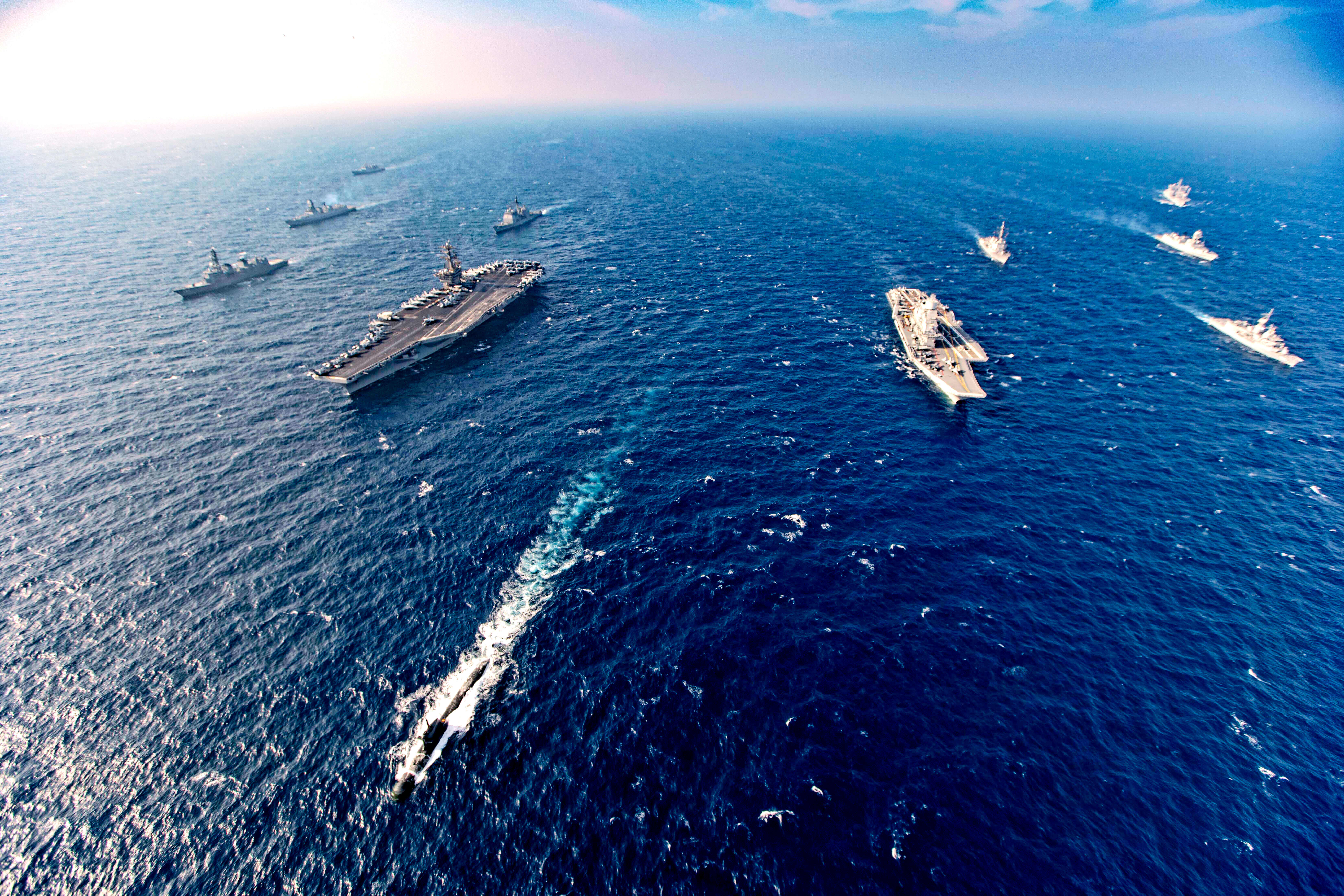
Aircraft carriers and warships participate in the second phase of Malabar naval exercise, a joint exercise comprising of India, US, Japan and Australia, in the Northern Arabian Sea on Tuesday, Nov. 17, 2020. The four countries form the Quadrilateral Security Dialogue, or the Quad.
Indian Navy | AP
With its first in-person summit at the White House on Friday, the Quad is making its biggest splash yet on a world stage that is increasingly being shaped by China.
U.S. President Joe Biden is scheduled to meet with Prime Ministers Yoshihide Suga of Japan, Scott Morrison of Australia and Narendra Modi of India.
The “quadrilateral security dialogue” among Australia, India, Japan and the United States was once an informal, ongoing discussion between senior officials about naval cooperation.
U.S. President Joe Biden hosts a ‘Quad nations’ meeting at the Leaders’ Summit of the Quadrilateral Framework with India’s Prime Minister Narendra Modi, Australia’s Prime Minister Scott Morrison and Japan’s Prime Minister Yoshihide Suga in the East Room at the White House in Washington, U.S., September 24, 2021.
Evelyn Hockstein | Reuters
Now, the Quad is morphing into top-level strategic cooperation on tech, the global economy, security and the pandemic as China’s strength and influence grow. The group’s statements are careful to avoid mentioning China, but the Chinese government nonetheless objects to the Quad as an attempt to derail its rise as a global power.
To get a sense of what’s next, CNBC in February came up with a question — What is the future of the Quad? — and ran it through an advanced game theory model. The effort generated specific predictions about the four Quad nations, China and other countries and territories with a stake in the Indo-Pacific region. The game theory model for CNBC’s Quad project was designed to focus on security and maritime issues.
More here: Read the full report on CNBC’s Quad project, including data visualizations, maps and a timeline
The model built for this report included almost 300 individual “players” — senior government officials and national institutions — spread among the Quad nations, China and 10 other countries and territories.
Here are the three major forecasts for roughly the next two years that came out of the model:
- Leaders in Australia, India, Japan and the United States will become much more focused on Indo-Pacific security, and the countries will act in an increasingly coordinated way. However, they won’t take any actions as a group that are more aggressive than they take already. For instance, they will not carry out naval exercises as a group within the South China Sea, which China claims as its own.
- Chinese President Xi Jinping will pressure each of the Quad leaders separately in an effort to create a wedge between them, but none will respond to him. Some senior leaders in China, including within the military, will begin to favor a more conciliatory approach toward the Quad. But they’ll run into hard nationalists at the top of the Chinese Communist Party. China will make no serious concessions to the Quad on its maritime claims.
- Other countries will align with the Quad or come close to its position on security, including the United Kingdom, Canada, Singapore, France and South Korea. That could come in the form of joining naval exercises with some or all of the Quad countries, or openly supporting the group’s security-related positions. Other countries, such as Vietnam, will edge closer to the Quad than they are now.
The experts who spoke to CNBC about the results agreed with the first conclusion, that the Quad will strengthen as a group.
“The baseline conclusion about the Quad becoming a permanent part of the architecture of Asia is right. I think it’s baked into the politics of the four countries,” said Michael Green, senior vice president for Asia and Japan chair at bipartisan research organization CSIS. “It makes good politics in all four countries.”
Regarding the third prediction, analysts who spoke with CNBC uniformly agreed that the Quad would find friends in Asia and Europe. That projection “reflects what I’m hearing from Korea, the military of the Philippines — and the Dutch, by the way,” Green said.
However, there was disagreement about the second conclusion, about Xi and potential divisions within his government.
“Xi is very dominant, and soft-liners are not going to be able to challenge him,” said Larry Diamond, a senior fellow at the Hoover Institution.
“Xi has gone so far down the road of militarization of the South China Sea and the promise of China greatness, China’s rise to hegemony in the Indo-Pacific, and essentially the recovery of Taiwan, that he can’t seriously moderate … without falling from power or risking it,” Diamond said.
Dive into CNBC’s Quad project here.
Source: CNBC
